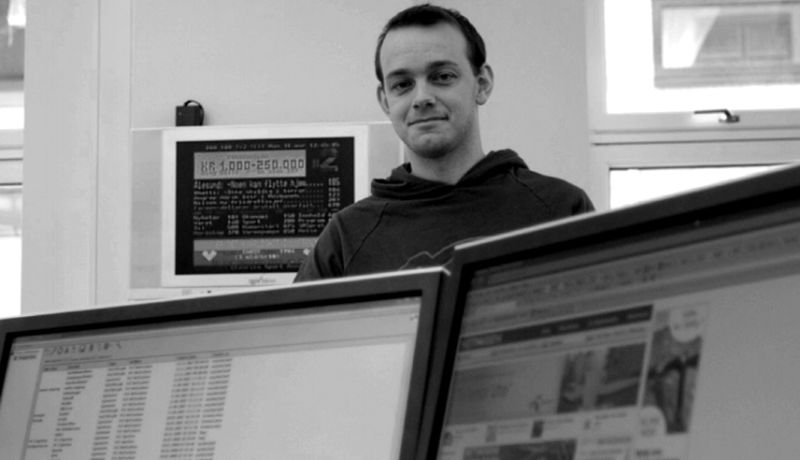Tansa helps reduce the workload in a consolidated newsroom
Confidence under pressure
Confidence under pressure
WALNUT CREEK, CALIFORNIA
In 2008 a Big Bang occurred in Northern California when the Alameda Newspaper Group merged with Contra Costa Newspapers and emerged as the Bay Area News Group (bang). Like the universe, a year later the group continued its expansion by bringing on the San Jose Mercury News. If the mergers and name changes weren’t enough, due to economic constraints felt across the industry, bang began the process of consolidating their newsroom operations.
Today the ad production, page layout, design and editing of 14 publications are funneled through a single production hub out of their offices in Walnut Creek, California. As many of the editors will tell you, this was no small task.
Bay Area News Group
The Bay Area News Group delivers the best local and regional news and information products and services in the San Francisco Bay market that covers all or part of six Bay Area counties. Its papers include: San Jose Mercury News, Contra Costa Times, West County Times, East County Times, San Ramon Valley Times, The Valley Times, Oakland Tribune, Alameda Times-Star, Tri-Valley Herald, Marin Independent Journal, The Daily Review, The Argus, San Mateo County Times, Times-Herald and Vacaville Reporter.
“Today we have fewer people and earlier deadlines; because of Tansa I am more comfortable within those constraints and can send the copy off with confidence.”
Centralization
With such significant changes come great challenges — one of which was going to be the centralization of their copy-editing operations. Instead of having 14 unique groups of editors aware of each publication’s style and well versed in the names of public officials and businesses reported on in each community, there would be a single pool of copy editors, feverishly editing the content for each publication.
The team tasked with establishing such an operation realized the potential hurdles of a centralized copy desk and decided to incorporate the Tansa Text Proofing System into their editorial workflow. “One of the hurdles of a centralized copy desk is a diminished familiarity with local names, places, histories and contexts — the hallmark of any local copy desk,” said Pete Wevurski, managing editor of the bang East Bay papers. “Tansa played an important role in counteracting the potential pitfalls of copy desk homogenization.”
A unified dictionary
As part of their enterprisewide rollout, bang supplied Tansa with archive material from all of their publications. This data was analyzed and mined for pertinent style, word usage and proper names. It was then collected, confirmed and incorporated into a single bang dictionary, capable of checking for the proper names of businesses or public officials across the multiple communities covered by the papers.
BANG editors admitted that it was difficult to institute a common style guide across the diverse group, but necessary to eliminate inconsistencies. “While there are cultural reasons for wanting to preserve the individual styles, in the long term, consolidation has been extremely helpful, especially on national issues and when sharing content,” said Frank Russell, online news editor.
Today Tansa is used across the entire newsroom, first by the reporters filing stories, then by metro editors and onto the copy desk; page designers run Tansa at the end of the night to find last-minute errors. “Because we’ve made Tansa available to everyone who touches a story file, a great many routine edits are fixed long before the story reaches the copy desk,” said Wevurski.
“We aren’t editing stories the way we used to. Tansa has given us the ability to streamline the workflow; we don’t have to triple-check anymore,” added Tim O’Rourke, copy editor. “In San Jose we use it early in the process, especially on breaking news.”
According to O’Rourke, Tansa has proved to be extremely useful, especially at the end of the night. “Tansa has made some big catches especially on those last minute errors that were inadvertently added on the page.”
Like many newspapers across the U.S., the Bay Area News Group has had to make changes in their operations to remain a competitive news provider in the region. They have had to reduce staff, consolidate resources and ask their people to accomplish more, with less, as a 24/7 news operation. Even with their reduced numbers, expanded content and earlier deadlines, the editors at bang agree that they have definitely seen an improvement in the overall quality of their content since they started running it through Tansa. Copy Editor Margaret Bethel has seen the impact Tansa has had firsthand: “Today we have fewer people and earlier deadlines; because of Tansa I am more comfortable within those constraints and can send the copy off with confidence.”
“About 70 editorial employees use the tool, and without a doubt Tansa removes language mistakes that could have harmed the final product.”
Tansa applied
Selection of case studies
Tansa is a natural and importatnt part of many companies everyday life. We have asked some of them how and why Tansa makes such a difference.

Consistency
“Most important is that Tansa ensures consistency where there are alternative word forms, and that it corrects spelling mistakes”

Efficiency
“In a modern news cycle, the time that elapses from event to published news is short, so we depend on an efficient proofing tool which is also easy to use”

A matter of (local) style
“For us, the installation of Tansa reduced the number of errors in our newspaper by many, many percent.”
